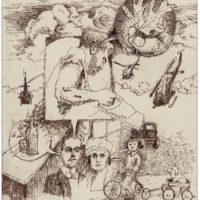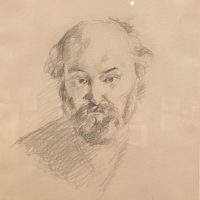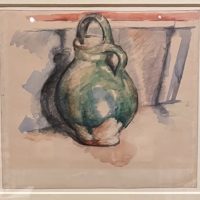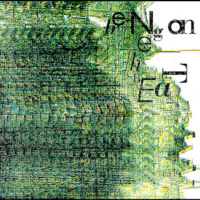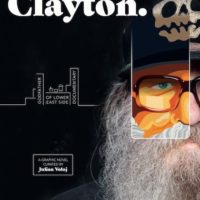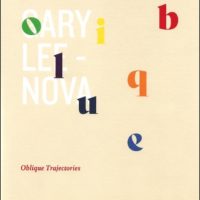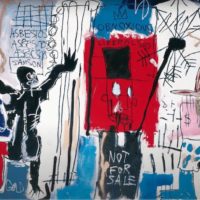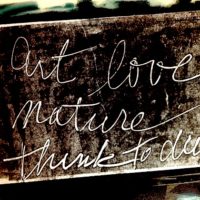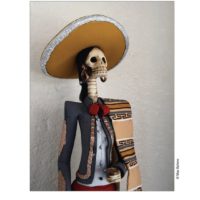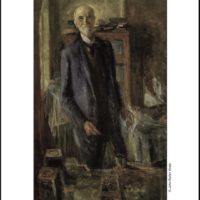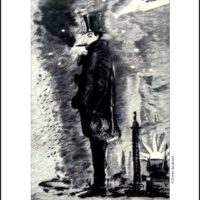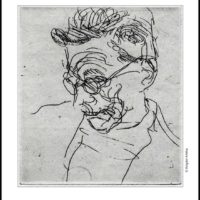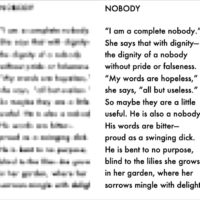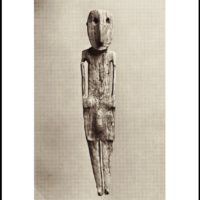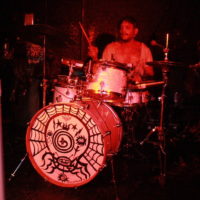“‘Acadian Elegies’ is a series of 24 texts that appropriate sentences from hundreds of obituaries. The source texts have not been altered except to remove proper names Their particular facts are employed to tell stories about no one in particular …” — Emile LeBrun
At MoMA in New York
Two More Sexy Cézanne Takeaways
If you can make it to the MoMA show, you won’t regret it. Have a look at two more sexy takeaways, thanks to our indefatiguable staff.
Cézanne Drawings at MoMA
Here Are Some Sexy Takeaways
If you can make the MoMA show, you won’t regret it.
New Lines to Sail Upon
When captains of the rising seas
claim mastery, and the world
in all its finery is theirs,
we who know its agonies
are left to cope. Even our
miseries are a taunting hope.
Cut-ups, Music, Soundscapes
Moloko CD: ‘Being On The Beat’
This 23-track CD compilation includes a 28-page booklet of essays, illustrations, and detailed track descriptions. The CD is dedicated to the memory of Jürgen Ploog.
Into the Mainstream
MoMA to Feature Clayton Patterson Documentaries
“Canadian-born multimedia artist and writer Clayton Patterson has lived through, and broadly documented, more of outsider culture and the evolving history of New York’s Lower East Side than anyone else of his generation. The virtually unseen archive of VHS and 8mm videos he shot there between 1986 and 2001 numbers over 2,000 tapes of astonishing diversity. … Always resolutely on the fringe, as a videographer he is best known for recording the battle between New York City police and protesters in the streets around Tompkins Square Park on the night of August 6, 1988, an event that led to multiple court appearances and appearances with Oprah and others on the talk show circuit.” — Ron Magliozzi, MoMA Curator Department of Film
Mixing Literature, Media Theory, Cartoons, and Science
“In striving for a sustained friction between the verbal and non-verbal in his practice, Gary Lee-Nova allows literature, theory, cartoon, occultism, science and music to inform and even collide in the work, but not to overtake it. And this balance is most evident when you look at his entire practice. As often as he strips down his pieces to foundational forms such as vibrating color bars, penetrating hectogons, and evolving pyramids, Lee-Nova visits with pop-culture formats like the cartoon strip, or art-historical tropes like the Dadaist riddle and the Surrealist collage. He plays with exhibition culture, as well, slyly labeling his sculpture with yet more meaning … It seems that as often as Lee-Nova is driving head-on for pure effect, he’s throwing in another dislocation.” — Sky Gooden
At The Broad in L.A.
A Gathering of Basquiats, Lichtensteins, and Warhols …
The Broad Museum in Los Angeles re-opens on May 26. It will include an “in-depth installation” of works by Jean-Michel Basquiat, Roy Lichtenstein, Kara Walker, Andy Warhol, Christopher Wool, and others. Have a look at some of the Basqiats that will be on view. Totally punk. Well totally punk in its time. Now it’s historical. But it looks in pixel reproduction as fresh as ever.
Art Love Nature Think to Dupe
It was a getaway / from the concrete city. / No bears alas / no porcupines alas / no mosquitos / no lyme-tick bites / one little fruit tree / knocked down by the wind / now gone alas / bears liked its berries / no deer alas
except one on the road / and there I was / alone alas. — jh
‘Unnatural Light’ from Cold Turkey Press
‘The eyeballs of an overpaid narcissus
begin to leak all sorts of nothing
and you smell the auric waste
of the languidly famous …’
—Jay Jeff Jones
Brion Gysin Uncut
Have you ever seen a more revealing photo of Brion Gysin than the one on the cover of “His Name Was Master: Texts; Interviews”? It shows a profound sense of dislocation, something Gysin often talked about but rarely showed in his demeanor—which was characteristically grand and worldly and often laced with humor. This sprawling book by Genesis Breyer P-Orridge with Peter Christoferson and Jon Savage offers Gysin in talking mode. It is Gysin uncut. Having already been comprehensively reviewed in The Brooklyn Rail, it needs no review from me. More interesting than anything I might have to say is Gysin’s account of his brief, teenage involvement with the Surrealists. The disappointment, not to say trauma, of that experience was a harbinger of later ones.
John Butler Yeats’s Sublime Ignorance
‘I had in my only philosophy a faith founded like that of Socrates upon the basis of my conscious ignorance—it is a sort of sublime optimism, and I am very satisfied with my ignorance as my betters are with their knowledge …’ — John Butler Yeats in a letter to his son William Butler Yeats
Once When High on Hash (Two Versions)
Baudelaire drew his self-portrait under the influence of hashish (ca. 1842). As for me, ‘I wore no topcoat … / and no comet struck / me from a morbid sky … ‘
Samuel Beckett: ‘Spring’
‘The strange, gentle pleasures I feel at the approach of spring are impossible of expression, and if that is a sentence inviting ridicule, so much the worse for me.’ — Samuel Beckett
Becoming ‘Nobody’
“This seems about right at any time but especially in the time of #MeToo.” — Yakov Boyarsky
At the Gravesite = Small Animals
Cold Turkey Press sees it this way for a card to be published in a limited edition.
Gone But Not Forgotten
The Pyramid Club on the Lower East Side
Gone, finished, closed, shut forever. Though less well known than CBGB, Webster Hall, The Palladium, the Continental, it gave birth to much LES culture. Over the last few years, the Pyramid Club struggled to stay alive. Then came the Covid-19 death grip.

